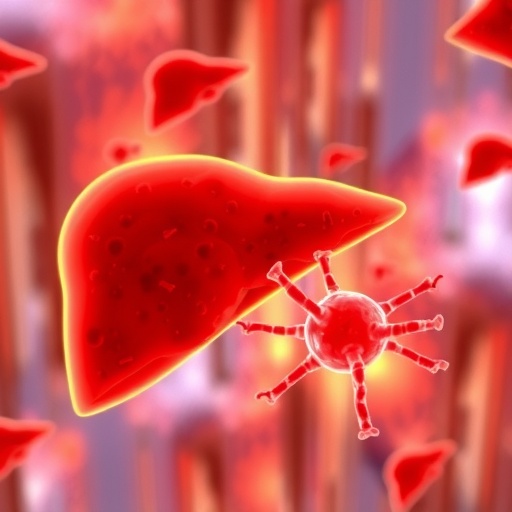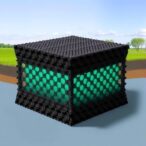
In a groundbreaking study poised to reshape our understanding of liver cancer, researchers have uncovered compelling genetic evidence that links specific immune cell types to the development of primary liver cancer. Utilizing the sophisticated technique of Mendelian randomization (MR), the study disentangles years of observational data plagued by uncertainties such as confounding factors and reverse causality. This analysis not only fortifies the causal relationship between immune system components and liver malignancies but also opens new avenues for personalized therapies targeting immune pathways.
Primary liver cancer remains a formidable health challenge globally, ranking among the leading causes of cancer-related mortality. Comprised mainly of hepatocellular carcinoma (HCC) and intrahepatic cholangiocarcinoma (ICC), this disease often advances silently, resulting in poor prognosis and limited treatment options. Previous observational studies have suggested a connection between immune activity and liver cancer progression, but the direction and strength of this link have remained elusive. The novel MR approach employed in this study leverages genetic variants as proxies for immune traits, providing a powerful lens to infer causality.
The two-sample Mendelian randomization framework utilized summary statistics from large-scale genome-wide association studies (GWAS) focusing on immune characteristics and liver cancer incidence. This design included over 456,000 European-ancestry subjects, comprising several hundred confirmed cases of both HCC and ICC alongside hundreds of thousands of controls. Importantly, the vast disparity in case-control ratios necessitated rigorous statistical techniques, with inverse variance weighting (IVW) serving as the primary analytic method to derive causal effect estimates.
Remarkably, the analysis pinpointed two distinct immune phenotypes causally associated with hepatocellular carcinoma risk. One of these involves CD3 expression on CD45RA-positive CD4+ T cells, exhibiting an odds ratio exceeding 1.3, implying that increased presence of this marker promotes HCC susceptibility. Conversely, CD80 expression on monocytes demonstrated a protective effect with an odds ratio below 0.6, suggesting that elevated levels may inhibit or delay tumor development. These findings underscore the complex, dualistic nature of immune components in orchestrating liver carcinogenesis.
For intrahepatic cholangiocarcinoma, the study unveiled six immune traits exerting significant causal influence. Notably, increased side scatter area (SSC-A) on natural killer (NK) cells and augmented CD3 levels on CD28-negative CD8bright T cells showed strong positive associations, with odds ratios approaching or exceeding 1.6 and 1.8 respectively. Additional factors such as CD45RA expression on naive CD4+ cells and resting regulatory T cell percentages within CD4+ populations were also implicated in elevating ICC risk. Conversely, reductions in markers including HLA-DR on hematopoietic stem cells and plasmacytoid dendritic cell proportions corresponded with heightened susceptibility, suggesting protective immune mechanisms are compromised.
The MR technique’s robustness was ensured through comprehensive sensitivity analyses designed to detect and mitigate potential biases arising from pleiotropy or heterogeneity. No significant violations were observed, lending considerable credence to the claim that these immune phenotypes exert true causal effects in the pathogenesis of liver cancer subtypes. This methodological rigor represents a vital step forward from traditional epidemiology, which often cannot definitively ascertain cause and effect.
From a mechanistic standpoint, the involvement of CD3 and CD80-related pathways highlights the critical interplay between adaptive and innate immunity in tumor surveillance and progression. CD3, a core component of the T cell receptor complex, mediates antigen recognition pivotal for immune activation, while CD80 provides necessary co-stimulatory signals that modulate T cell responses. Dysregulation of these markers could either facilitate immune evasion by malignant cells or impair anti-tumor immunity, reflecting an intricate balance that determines cancer trajectories.
Meanwhile, the associations found for NK cell parameters and dendritic cell subsets in ICC patients emphasize the importance of innate immune defenses. NK cells are frontline effectors against transformed cells, and alterations in their activity may enable neoplastic cells to thrive undetected. Similarly, plasmacytoid dendritic cells contribute to antiviral immunity and produce type I interferons, implicating immune surveillance failure in cholangiocarcinoma development.
These insights offer promising implications for clinical strategies aiming to harness or modulate immune responses in liver cancer treatment. Targeting specific immune phenotypes genetically linked to tumor risk could enable personalized immunotherapies tailored to an individual’s immune landscape. Moreover, these biomarkers may serve as predictive tools for early detection or prognosis, filling critical gaps in current diagnostic frameworks.
Nevertheless, while the MR design effectively leverages genetic variation to infer causality, it inherently reflects lifelong exposure effects and may not capture dynamic immunological changes occurring during disease progression. Further experimental validation and translational research are essential to translate these genetic associations into functional understanding and therapeutic interventions.
In conclusion, this seminal study redefines the causative role of the immune system in liver cancer, substantiating that precise immune cell subsets actively influence cancer susceptibility rather than merely responding to tumor presence. Bridging genomics and immunology through Mendelian randomization, the research exemplifies the transformative potential of genetic epidemiology in unraveling complex disease mechanisms. As liver cancer continues to challenge medical communities, these findings invigorate efforts to innovate immune-based diagnostics and treatments, heralding a new era of precision oncology for this devastating disease.
Subject of Research: Causal associations between immune cell phenotypes and primary liver cancer (hepatocellular carcinoma and intrahepatic cholangiocarcinoma) explored through Mendelian randomization.
Article Title: Causal role of immune cells in primary liver cancer: a mendelian randomization study
Article References:
Liu, J., Zhang, T., Gao, Y. et al. Causal role of immune cells in primary liver cancer: a mendelian randomization study. BMC Cancer 25, 928 (2025). https://doi.org/10.1186/s12885-025-14327-1
Image Credits: Scienmag.com
DOI: https://doi.org/10.1186/s12885-025-14327-1
Tags: causal relationship in oncologygenetic evidence in cancergenome-wide association studies in liver cancerhepatocellular carcinoma studiesimmune cells and liver cancerimmune pathways in cancer treatmentimmune system and cancer progressionintrahepatic cholangiocarcinoma findingsMendelian randomization techniqueobservational data in cancer researchpersonalized therapies for liver cancerprimary liver cancer research



